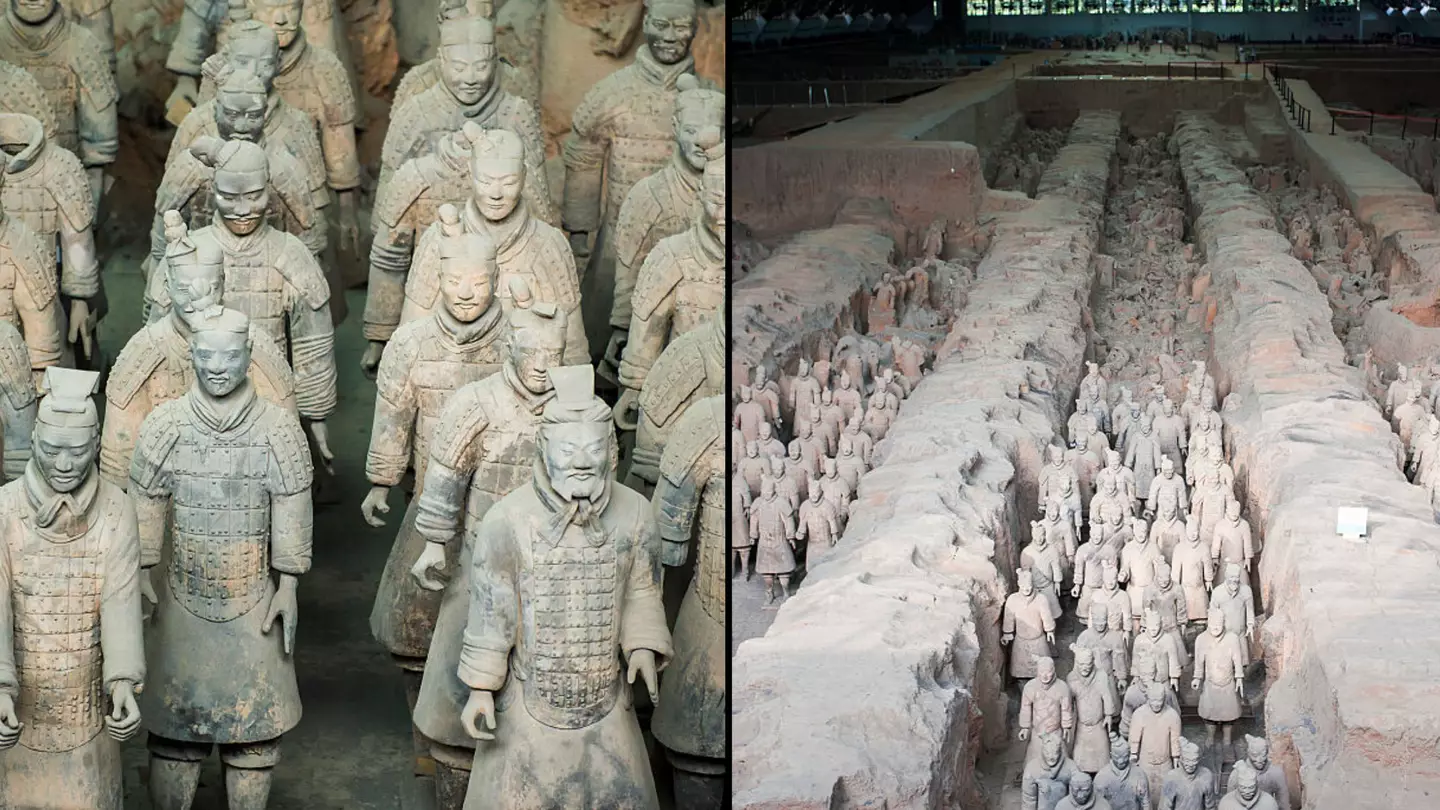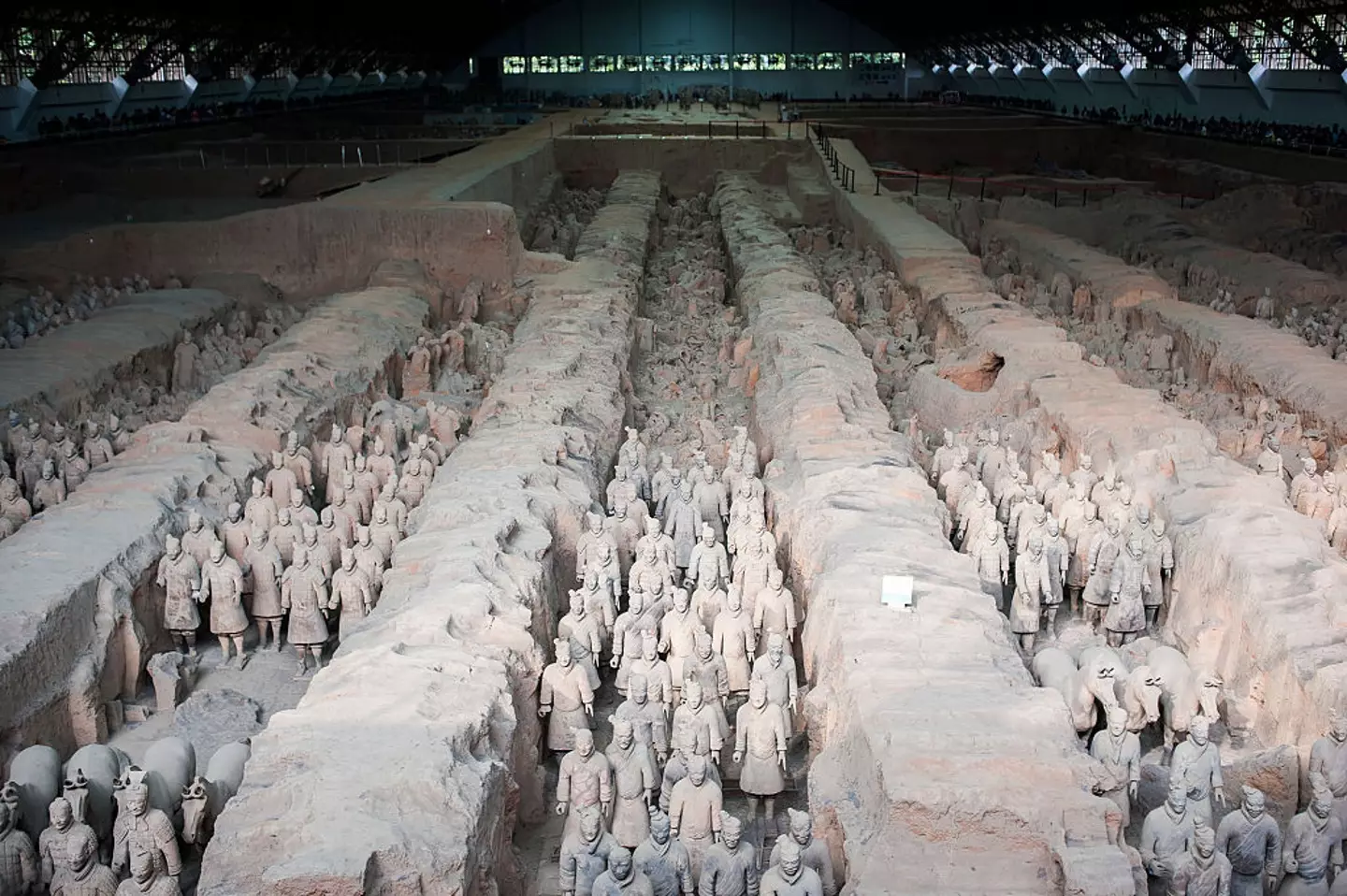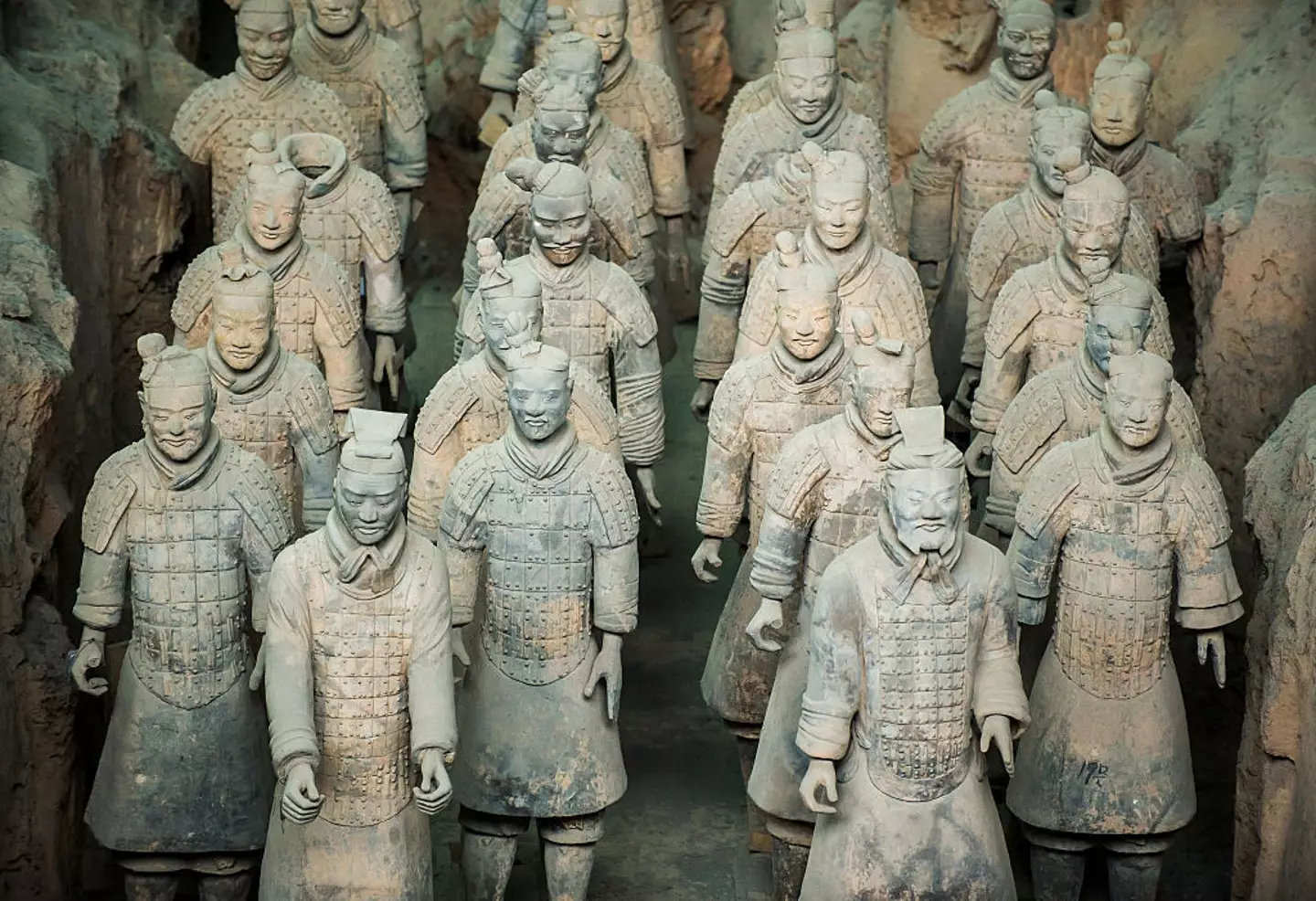
Archaeologists love digging around and unearthing lost pieces of the past - it's pretty much their bread and butter.
But they've been scared off having a look inside the tomb of China's first Emperor for quite a sinister reason.
Qin Shi Huang's final resting place in the Shaanxi province is guarded by its very own Terracotta Army - thousands upon thousands of clay sculptures depicting his loyal soldiers and horses.
Advert
Farmers stumbled across the special site, which is estimated to sprawl across 60 square kilometres, back in 1974.
The emperor and his afterlife army had lay undiscovered for centuries until they made the incredible find - and archaeologists couldn't wait to have a look at it.
Excavators have had a field day there over the years and have unearthed some extraordinary pieces, including ancient weapons and other artefacts.
But despite being kept busy by the surrounding area, they have steered clear of Qin Shi Huang's tomb itself.
Advert
Believe it or not, it's not the fact that it's flanked by more than 8,000 stone warriors that's caused experts to keep their distance either.

Apparently, entering the chamber where the emperor lies could have deadly consequences, according to an early Chinese historian.
Sima Qian, dubbed the 'father of Chinese historiography', claimed that the tomb is littered with elaborate booby traps - such as mechanical flowing rivers of mercury - to ward off inquisitive intruders.
Advert
In his historical book The Shiji, he warned that there are also crossbows that will ‘operate automatically’ and shoot anyone who tries to excavate the site.
It seems Qian might have been bang on with his theory too - as a study in 2020 found that there were unnaturally high levels of mercury at the site.
The paper stated: "Highly volatile mercury may be escaping through cracks, which developed in the structure over time, and our investigation supports ancient chronicle records on the tomb, which is believed never to have been opened/looted."
It's also quite fitting, seen as though Qin Shi Huang reportedly became obsessed with drinking mercury on his quest to achieve immortality.

Historians believe his death at the age of 49 may have been brought on by mercury poisoning, as he often drank wine laced with the element.
Advert
The emperor, who was the first to rule unified China from 221 BC to 210 BC, is said to have been buried in an airtight tomb that is roughly the size of a football pitch.
As well as the fact it might be chock-a-block with booby traps, there are also fears disturbing the tomb could ruin the artefacts inside it.
When members of the Terracotta Army were excavated, the painted surfaces of some of them began to flake and fade. And if they were exposed to the dry climate in Xi'an, the statues coloured coating would flake off in just four minutes.
Archaeologists have reportedly weighed up the idea of investigating the tomb with non-invasive methods, but nothing has been done yet.
Advert
Maybe sometimes, things are better left untouched. Curiosity killed the cat, didn't it?
Featured Image Credit: studioEAST/Getty ImagesTopics: China, World News, History, News